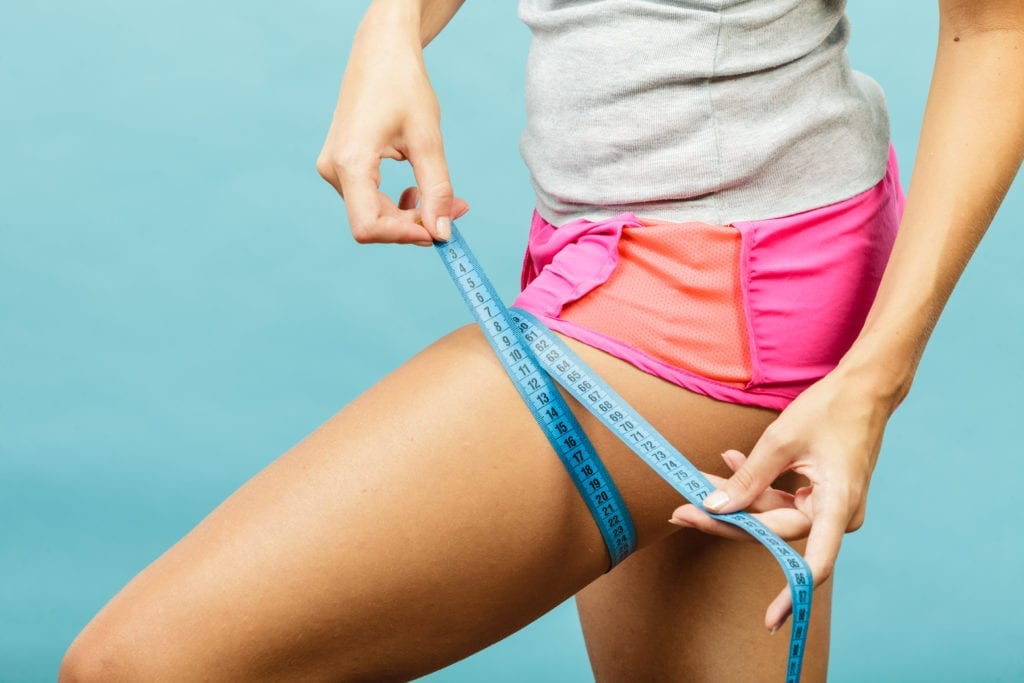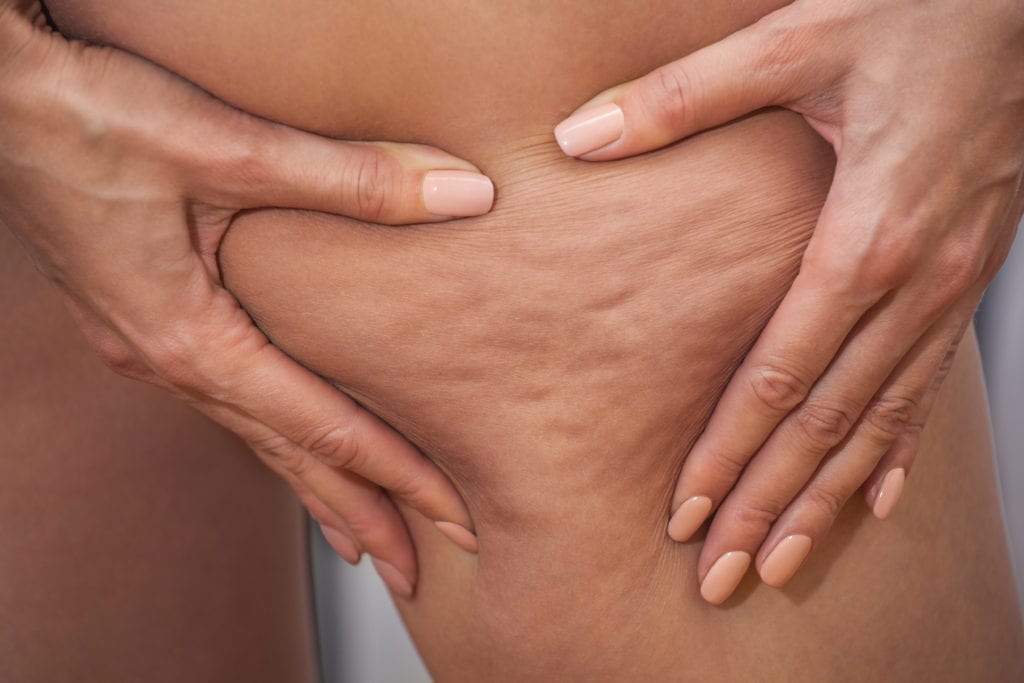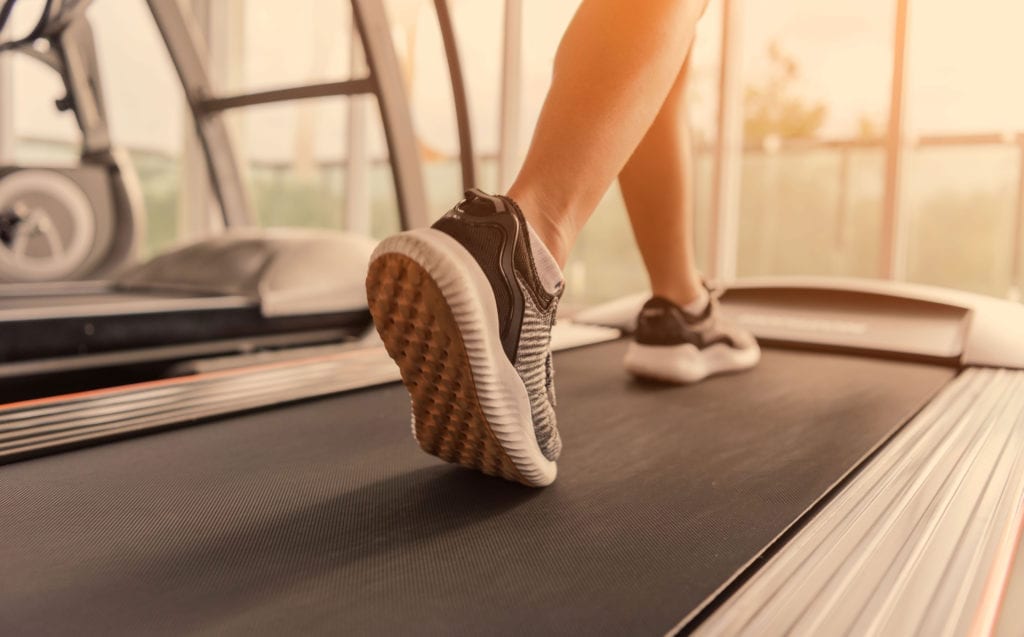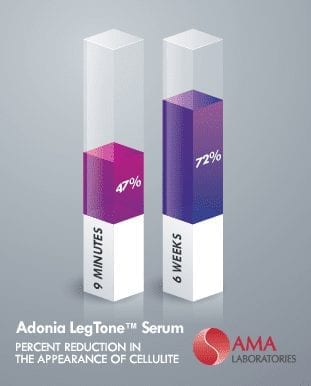Nearly every woman has cellulite—in fact, 98% of women develop cellulite at some point in life. While cellulite is a natural thing, many people feel it’s unsightly and look for ways to get rid of it. Many go-to methods to remove cellulite include liposuction (otherwise known as lipo), laser therapy, and anti-cellulite creams.
With so many different treatment options to get rid of cellulite, it can be hard to determine what will truly work. In our guide, we discuss liposuction, what it is, and if liposuction can really get rid of cellulite.
What is Liposuction?
Liposuction, commonly referred to as lipo, lipoplasty, or lipectomy, is a form of cosmetic surgery to eliminate fat in certain areas of the body. We should clarify, though, that liposuction is not for major weight loss or a “cure for obesity,” so to speak, it’s usually a last-ditch effort to eliminate trouble spots when diet and exercise don’t do the trick.
Liposuction is one of the most common cosmetic procedures, with over 300,000 procedures performed annually. And at $2,500 to $3,000 per procedure, we can assume Americans spend at least $750 million on liposuction every year.
The goal of liposuction is to break up and remove fat from certain parts of the body, such as the buttocks, thighs, abdomen, upper arms, chin, and more. Apart from aesthetic reasons, people can also get liposuction to treat certain conditions, such as lymphedema (a condition in which excess fluid collects in body tissue, resulting in swelling and discomfort).
Liposuction is not a one-and-done treatment method, and it doesn’t produce the same results for everybody — many people end up having to undergo multiple procedures throughout their lifetime to maintain their desired appearance. It’s also worth mentioning that those with poor skin elasticity should avoid liposuction since they could end up with saggy skin where the procedure was performed.
It may sound corny, but you get from liposuction what you put into it. If you follow a healthy lifestyle (i.e. eat a balanced diet, stick to a healthy sleep schedule, and exercise three to five times per week), you’re more likely to see long-lasting results. But if you expect lipo to be a magic cure for weight loss, you’ll be sorely disappointed.
Liposuction should be thought of as a supplement to your training regimen — if following a healthy diet and exercising regularly isn’t helping you trim down in a specific area, liposuction could be a viable option to see the results you’re hoping to achieve.
The Procedure
As we mentioned earlier, the goal of liposuction is to break up and remove fat from trouble spots. When you gain weight, your fat cells expand, and liposuction works to remove those expanded fat cells so you can achieve your weight loss goals.
Before the procedure, you’ll be given a local or general anesthetic. If you’re having liposuction performed on a small area of your body, you may even be asked to stand up during your procedure to ensure even fat removal.

During this procedure, a hollow tube called a cannula is inserted under the skin around your “trouble spots.” Then, a high-pressure vacuum is attached to the opposite end of this tube to suck fat from beneath the skin. However, there are a few different techniques for doing this.
- Dry liposuction: No fluids are injected before the fat removal process; this technique is seldom used as it often results in more severe bleeding and bruising.
- Tumescent liposuction: This is the most common technique — during this, saline, lidocaine, and epinephrine are all pumped below the skin before the fat is suctioned out.
- Ultrasound-assisted (UAL) and power-assisted (PAS) liposuction: During UAL, surgeons use ultrasound waves to melt away fat cells quickly and easily. Then, they use the PAS technique to suck the liquified fat out of the body. During PAS, they attach a special mechanism to the end of the cannula that rapidly moves back and forth, this helps to further break up fat cells as they’re being sucked out of the body.
- Laser-guided liposuction: This is essentially tumescent liposuction with the assistance of lasers. Saline, lidocaine, and epinephrine is injected into the area in which the procedure is being performed. Then, surgeons make a very small incision to insert a cannula with a laser beneath the skin. Fat is heated up and sucked from below the skin. Afterward, surgeons leave the incision open so fluid can drain out naturally.
Risks of Liposuction
The most common complications (or adverse side effects) with liposuction include bleeding, bruising, numbness, and inflammation. However, you can also experience kidney or heart problems, skin burns, allergic reactions, and infections.
More severe complications with liposuction include thrombophlebitis, pulmonary edema, pulmonary embolism, and death.
One other major risk of liposuction is skin irregularities. If your skin lacks elasticity and can’t bounce back in shape, you’ll likely end up with saggy skin. Or, oppositely, if you have liposuction performed in an area where it’s not completely necessary and you “overcorrect,” you can suck away too much fat, so when your skin bounces back, it’ll appear lumpy and uneven.
If you’re seeking liposuction for cellulite, it’s important to understand these are two very big risks. Many cosmetic surgeons will tell you liposuction for cellulite is not effective and won’t give you the results you’re looking for.
Now that we’ve talked about what doesn’t work for cellulite, let’s discuss what cellulite is and effective ways to get rid of it.
What is Cellulite?
Cellulite (otherwise known as orange-peel or cottage cheese skin) is a very common condition resulting in bumpy or lumpy-looking skin. It usually develops around the thighs, buttocks, arms, and stomach.
Cellulite can be mild or severe, and dermatologists and doctors rank cellulite by three different grades of severity:

- Grade 1 (Mild): Less than 4 lumps across the skin; skin may have a slightly saggy appearance
- Grade 2 (Moderate): 4 to 9 visible bumps have formed in trouble spot; skin may look noticeably saggy or “draped”
- Grade 3 (Severe): Over 10 deep impressions have formed; skin appears visibly saggy. Some refer to severe cellulite as the “mattress phenomena” because the skin resembles the surface of a tufted mattress.
Cellulite occurs in both men and women of all body types (yes, even thin people can develop cellulite) but it is much more prevalent amongst women. While cellulite is completely harmless, many people are self-conscious of it and look for ways to get rid of it.
“Why is cellulite more common in women?” you might ask. To answer that, we have to look at why cellulite develops.
What Causes Cellulite?
Cellulite is the result of an interaction between your fat cells and the connective tissue right below your skin. When fat protrudes into the layer of connective tissue, you see cellulite.
In men, this layer of connective tissue has a criss-cross pattern, so it’s difficult to breakthrough. In women, however, the layer of connective tissue runs vertically, so fat can easily push through and cause cellulite.
Cellulite can result from a variety of different things, such as poor circulation, hormones, age, and genetics, and can be very tricky to remove. Usually, lifestyle changes are the best option for getting rid of cellulite because treatments are often temporary and expensive.
- Poor circulation: If you have poor circulation in a certain part of your body, it means less oxygen is reaching that area. Less oxygen results in diminished collagen production. Collagen keeps your connective tissue strong, so when your body doesn’t produce as much, it can result in cellulite.
- Hormones: When women enter menopause, estrogen levels drop, and when estrogen levels drop, blood flow to the connective tissue decreases, resulting in cellulite. Diminished estrogen levels also cause fat cells to increase in size and volume, further contributing to cellulite.
- Age: As you get older, your skin loses its elasticity and begins to thin, making it prone to sagging and cellulite.
- Genetics: Your entire make-up is determined by genetics, and your genetics can impact everything from your circulatory levels to how your body stores fat. Certain genetic factors can affect your chances of developing (or not developing) cellulite.
Lifestyle Changes to Reduce Cellulite
As we mentioned earlier, the best thing you can do to get rid of cellulite is to start with lifestyle changes.
If you smoke, quit. If you eat a diet high in saturated fats and carbohydrates, try eating more vegetables, fruits, and lean meats. Lastly, if you don’t exercise, start! When you take care of yourself, your body can function how it should, which decreases your chances of seeing cellulite and experiencing weight gain.

Treatments for cellulite are usually costly, and many people fail to see long-lasting results. However, if you find lifestyle changes aren’t doing the trick, combining a healthy lifestyle with a more advanced therapy option can help you achieve the results you’re looking for.
Other Common Treatment Options
There are many different therapy options for cellulite removal. The best option for you will depend on the severity of your cellulite, your lifestyle, and your budget restrictions.
Below, we offer a breakdown of the most popular treatment options, discuss how effective they are, and provide average pricing.
Anti-Cellulite Creams
Anti-cellulite creams are an inexpensive option and a great way to supplement a proper diet and exercise to remove cellulite for good. These creams can range in price pretty drastically, with some costing as little as $12 and others priced over $100. Usually, though, you can find a good anti-cellulite cream for around $50 to $75.
Every anti-cellulite cream targets cellulite differently, but generally, these creams are designed to tighten your skin, increase blood flow, break down fat, promote collagen production, and drain toxins from your lymphatic system.
Our favorite anti-cellulite cream is one that’s been not only recommended by doctors but has also been featured on The Doctors TV show — so you can feel confident this cream will help you see the results you’re looking for.

The Adonia LegTone Serum, brought to you by Adonia Organics, has been clinically proven to reduce the appearance of cellulite in less than 10 minutes, and its effects last for up to 12 hours.
It’s perfect for vacations, date nights, and days by the pool; and with long-time use, can decrease the overall appearance of cellulite by 72% (as found in a six-week study conducted by AMA Labs).
Adonia Organics’s Legtone Serum features plant stem cells, organic neroli, and 23 natural botanicals to tighten saggy skin and eliminate lumps and bumps, ultimately reducing the appearance of cellulite. Even better? It’s paraben-free, gluten-free, and cruelty-free!
Adonia LegTone Serum only takes a few seconds to apply, its non-greasy formula glides smoothly over your skin and absorbs instantly. Each bottle costs $79 and will last you about a month if you use it daily (if you only use it a few times a week, one bottle can last much longer). Plus, Adonia Organics offers free shipping with every order.
If you are looking for a simple solution for cellulite, an anti-cellulite cream is the way to go. If you find anti-cellulite creams won’t do the trick, consider a more intensive therapy to zap cellulite for good.
Cellulaze™ (Laser Therapy)
Cellulaze™ is the most popular form of laser therapy for cellulite removal. While Cellulaze™ is minimally invasive, it’s a lot costlier and more advanced than most of the treatment options we’re talking about in this guide. We suggest giving other treatments a try before opting for Cellulaze™.
As we mentioned, this treatment is minimally invasive, so you won’t have a lengthy recovery time or have to worry about permanent scarring. During this procedure, a small incision is made and a tiny laser is inserted below the skin. This laser works to break up fat, stimulate collagen production, and increase skin thickness.
Cellulaze™ can cost nearly $6,000 per session and results typically last at least one year — if Cellulaze™ treatments are something you want to commit to, you’ll need to budget around $6,000 a year to maintain your desired results.
Cellfina™
Cellfina™ is very similar to Cellulaze™ except there are no lasers involved. Plus, Cellfina™ is a bit more budget-friendly and longer-lasting, with sessions costing approximately $4,000 and results lasting as long as two years.
During this procedure, a small incision is made and a needle is inserted beneath your skin. Your dermatologist will then use this needle to break up connective tissue and smooth out your skin. The most common side effect of this procedure is mild to moderate bruising.
We should mention, though, that Cellfina™ is only for mild cellulite and is designed to target individual lumps and bumps. If you have moderate to severe cellulite (more than 5 visible bumps across the skin), Cellina™ is not recommended.
VASERshape™
VASERshape™, commonly referred to as Vaser, is a lot like lipo, but more effective than traditional liposuction techniques and completely noninvasive. Treatments can cost anywhere from $600 to $1000 per session, and you’ll need to go back for three to five sessions to see noticeable results.
The goal of Vaser therapy is to melt fat cells, increase circulation, and stimulate lymphatic drainage to reduce the appearance of cellulite. During VASERshape™, ultrasound waves are used to reduce the size of fat cells beneath the skin. Then, a zoned massage is performed around your trouble spots to promote circulation and drain toxins out of your lymphatic system.
All in all, the procedure can take about 40 to 60 minutes and the results are temporary.
Thermage®
Thermage® is another completely noninvasive way to treat cellulite. Most patients only require one treatment session, and sessions typically cost around $2,000 (but prices can range from $900 to $4000).
A single Thermage® session can last anywhere between 30 to 90 minutes, and you can resume normal physical activity immediately after. Unlike other treatment methods we discussed, Thermage® doesn’t produce instant results. Instead, you’ll notice the appearance of your skin change over the course of six months, gradually becoming smoother and tighter, and results can last for years.
Thermage® uses radiofrequency to heat up your dermis (the thick layer of tissue right beneath your skin) and promote collagen production and improve circulation. As we mentioned earlier, poor circulation and decreased levels of collagen can result in the formation of cellulite, so by targeting these two key things, Thermage® is able to eliminate existing cellulite and prevent future lumps and bumps from developing.
Endermologie®
Endermologie®, sometimes referred to as a lipomassage, is the first cellulite treatment to be cleared and approved by the American Food and Drug Administration (FDA). In addition to reducing cellulite, Endermologie® can also boost circulation, improve skin tone and elasticity, and ease minor aches and pains.
Endermologie® is noninvasive, but you’ll need to undergo 20 treatment sessions (many patients notice results after 6) to see long-lasting results. Each session costs around $100, but prices will vary.
Each Endermologie® session is essentially a 45-minute massage. During your session, a trained Endermologie® therapist will use a hand-held massage roller to knead your trouble spots. As this massage roller runs over your body, it suctions your skin (targeting your dermis) to pull excess water away from your body, stimulate lymphatic drainage, and increase circulation.
While all of these therapies are effective to some degree, take your lifestyle habits and severity of cellulite into consideration before choosing the best one for you. Of course, we always suggest talking with your doctor or dermatologist to ensure the treatment is a good fit for you before proceeding.
FAQs
Can you get cellulite even if you exercise?
Regular exercise can reduce your chances of developing cellulite and prevent mild cases of cellulite from becoming more severe. Exercises as gentle as stretches to as intense as strength training can improve skin elasticity, build muscle, and burn fat.
Can you use exercise to get rid of cellulite?
If you have mild cellulite, exercising and improving your diet should be enough to help you eliminate lumps and bumps and see smoother-looking skin. Exercise isn’t always a sure-fire way to eliminate or “cure” cellulite, but certain exercises can burn fat and tighten your skin, and as a result, reduce the appearance of cellulite.
Am I a good candidate for cellulite reduction?
This depends on the severity of your cellulite and your commitment to a healthy lifestyle. If you have moderate to severe cellulite and feel you could stick to a consistent workout regimen and healthy diet after cellulite reduction treatment, then it’s probably worth the money for you.
However, if you’re hoping more advanced treatments will be a cure without changing any lifestyle habits, you probably won’t see lasting results.
If you’re somebody with very mild cellulite, we suggest trying anti-cellulite creams and lifestyle changes before opting for more advanced treatments.
Can you get rid of cellulite naturally?
Yes! If you have mild cellulite, switching up your diet and exercise regimen should be all that’s necessary to get rid of it.
Eating more lean meats, dark green veggies, and fruits high in antioxidants (like blueberries, blackberries, and strawberries) is an easy way to improve your diet without limiting yourself. Although, we do suggest cutting back on salty foods and replacing bad fats with good fats. For example, if you typically cook with butter or vegetable oil, try coconut oil or avocado oil instead.
Also, try incorporating more fat-burning exercises into your workout regimen. These exercises will vary depending on the area you’re targeting, but generally, this will involve increasing cardio and doing more strength training.
Is Liposuction for Cellulite Worth It?
Simply put, no. If you’re concerned about cellulite, we suggest consulting with your doctor or dermatologist, as they will be able to talk you through your best treatment options. Though countless people have tried liposuction for cellulite removal, very few say they’ve seen long-lasting results. Your best bet to get rid of cellulite for good is to start with lifestyle changes and anti-cellulite creams before delving into more intensive and expensive therapies.


